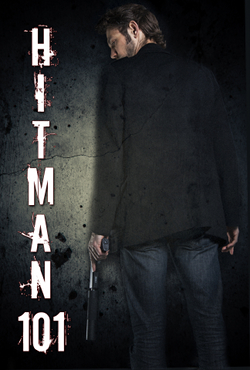Top Ten: Classics That Should Be Re-released in 3-D
 10. Apocalypse Now (1979)
10. Apocalypse Now (1979)
Even more than the you-are-there opening of Saving Private Ryan, Apocalypse Now is the so far ultimate immersive war film. Walking a tightrope between realism and a psychedelic expressionism, the movie drops you in the headspace of protagonist Willard (Martin Sheen) as he goes up the river to Cambodia on a mission to kill renegade Colonel Kurtz (Marlon Brando). On his journey he encounters both raucous battles and contemplative moments that already come close to integrating into a cohesive world before the viewer’s eyes; 3-D would push that process just one step further. The “Ride of the Valkyries” sequence alone would be eye-popping in the third dimension. A 3-D conversion, blasphemous and unnecessary as it is to contemplate, would force the visuals past even the dense, carefully laid sound design in pure encompassing power.
9. Something directed by Kenji Mizoguchi
One of the most assured masters of mise-en-scène in the history of film, Kenji Mizoguchi is rightly admired for his richly textured long takes and crisp, forceful images. 3-D could rightfully be tested in trying to impart a new dimension (pun intended) to his most visually sumptuous films, especially his run in the mid-1950s, where period history and emotional upheaval are imparted purely through space and light. Just as Cave of Forgotten Dreams and Pina, by two noted German auteurs incidentally, were seen as attempts to use 3-D in an artistic capacity and not just as a faddish afterthought to artificially raise ticket prices, a retrofitting of Mizoguchi’s most bewitching, overwhelming films would be another step in the technology’s significance, an experiment whose success or failure would indicate whether 3-D is truly ready to be considered a legitimate aesthetic tool within the art of cinema.
 8. The General (1926)
8. The General (1926)
In a kind of tribute to Martin Scorsese’s bringing of the apocryphal Lumières’ train-crashing-through-the-screen incident into the world of 3-D, I chose Buster Keaton’s classic The General, another train-centric film, to be added to the 3-D pantheon. Part adventure, part romance, mostly slapstick comedy of epic proportions, Keaton’s favorite of his own movies have enough stunts and crashes for a plethora of exciting three-dimensional moments. The film’s most iconic uses of geometry, space, and motion, including the famous sight gag of Keaton sitting dejectedly on the bar between the locomotive’s wheels, unknowingly rising and falling in circular motions when the locomotive begins moving, would work as wondrously in 3-D as they always have in 2-D. If 3-D technology were used on truly worthwhile spectacles instead of on whatever new action product needs a bit of goosing in the excitement department, The General would be prominent in the first wave of retrofitted cinema classics.
7. A Matter of Life and Death (1946)
I struggled to choose between several Michael Powell and Emeric Pressburger productions to retrofit to 3-D, with good arguments to be made for the extended ballet sequence from The Red Shoes and so many of the breathtaking composite shots in Black Narcissus benefiting from the process, but in the end I decided on the grand architecture and decidedly human-level concerns of their fantasy A Matter of Life and Death. The “other world” in which RAF pilot David Niven finds himself after jumping from his plane without a parachute is open and expansive, full of modernist sets and a notable giant escalator to link it with our mere human plane of existence. Jumping from silvery black-and-white to Technicolor as it does would pose a challenge, but being able to immerse oneself in this abstract realm of judgment, the better to relate with Niven’s already immensely likeable defendant, could bring the film a new audience to this romantic, beautiful flight of fancy.
 6. Police Story (1985)
6. Police Story (1985)
Jackie Chan demands to be an element displayed in 3-D. His fast-moving, acrobatic body and ever-shifting position in space would make such a conversion tricky but worthwhile. For me his foremost action film is 1985′s Police Story, in which car chases, a bus stunt, and a series of delirious set-pieces within a shopping mall make Jackie the toughest urban action star in Hong Kong cinema. Only the rapid cutting would prove difficult in a 3-D conversion; otherwise, his fluid movements and those of his stunt team and costars would energize the screen like few films so far. Jackie’s films’ frequent emphasis on spatial cohesion and meticulously choreographed fight sequences are perfect for elongation towards the audience, making them instinctively bob and weave from incoming fists and thrown objects, the smooth, rapid utilization of props and environmental conditions one of the action star’s main specialties. A succession of Jackie Chan 3-D re-releases would inevitably follow the success of Police Story, and hopefully its example would be followed by action pioneers who learn how to successfully exploit the technology.
5. Jaws (1975)
This seems almost too elementary. The directorial father of the blockbuster, Steven Spielberg, has already released his Tintin animated adaptation in 3-D and is slated to re-release Jurassic Park, but his ultimate coup might be to frighten an entirely new generation with a 3-D Great White. Besides being a marvelous film of tension, suspense, and outright shocks (imagine the infamous severed head literally floating at you!), Jaws has a terrific use of space even in group or basic dialogue scenes. The jokey game of monkey-see-monkey-do between Chief Brody (Roy Scheider) and his son would be cute in more literal depth. The many triangular arrangements of Brody, Hooper (Richard Dreyfuss), and Quint (Robert Shaw) would gain extra appeal when the characters shift and rearrange to assert control and dominance. And of course the many sudden appearances of the shark are, commercially, practically what the studios want 3-D for in the first place.
 4. Yellow Submarine (1968)
4. Yellow Submarine (1968)
A few years ago there was a Robert Zemeckis-directed 3-D motion capture remake of Yellow Submarine in the works, with current British actors like Peter Serafinowicz and Cary Elwes taking the places of then-current British actors in the late 1960s as the speaking voices of the Fab Four. Luckily the relative failures of a few high-profile animated films scuttled that idea. Yet why redo something that’s already so weird and unique in the first place, except to extend it into the third dimension? Animation seems an ideal medium for conversion to 3-D, its already elastic visual properties plausibly enhanced by being freed from two-dimensionality. The omnipresent psychedelia and wondrous world-building of the original would translate to the next generation in a whole new way, the amorphous shapes and cut-out characters and objects breaking the sacred fourth wall perhaps without rhyme or reason. You needn’t be in an altered state to enjoy it, but it might help.
3. Something starring Fred Astaire & Ginger Rogers
The best-known 3-D dance films, Step Up 3D and Pina, can take some lessons from their cinematic forebears, Astaire and Rogers. Seeming to leap from the screen even without the aid of contemporary technology, the most celebrated pair in filmic dance could engage jaded audiences in a brand new way by stepping into the third dimension. The elegantly flowing costumes and charming Art Deco sets would transform on the two-dimensional stage into a three-dimensional environment of crisply choreographed bodies, like a personal performance in one’s living room. The spectacle-driven crowd musicals of the 1930s, especially those from Busby Berkeley, are also ripe for conversion, and what they cede to their modern equivalents in flashiness and up-to-date style they make up for in sheer heft and grandeur.
 2. Metropolis (1927)
2. Metropolis (1927)
Fritz Lang’s mammoth masterpiece, recently restored from footage found in Argentina, is itching to be seen in a further dimension. Rendering in 3-D would only add to its grandiosity and in-your-face-ness. Its modernist- and Art Deco-inspired architecture could jut out from the screen, towering over the audience more literally than it ever had before. The robot Maria’s (Brigitte Helm) gyrations would explode in the third dimension. Lang himself would probably despair if Metropolis were to be made even more immediate or visually overwhelming, as politically naive he retrospectively found it, even “silly and stupid” as he called it in an interview with Peter Bogdanovich, despite its inarguable technical virtuosity. Yet the film is one to be experienced more than intellectualized, and converting its engulfing, dystopian imagery into full 3-D would be a rapturous melding of cinema past and technological present.
 1. Playtime (1967)
1. Playtime (1967)
As perfectly designed as it is for the flat surface of a screen, Jacques Tati’s seminal Playtime, containing one of the greatest cinematic universes ever conceived, could perhaps become even more immersive in the third dimension. Architectural and perspectival gags abound in the film, from swinging doors to a carousel-like roundabout of cars, that could be usefully translated into 3-D. The relatively long takes and wide shots could be mined for 3-D effects, with enough freedom to still allow for viewers to make up their own minds about what to focus upon. Tati so meticulously engineered his masterpiece for massive projection that it still feels a bit perverse to even suggest 3-D-ification, but its imposing comedic edifice is too impressive to ignore. Plus, the phrase “3-D Tati” has a certain musical ring to it.
-
luke_a
-
http://twitter.com/Fulmer Fulmer
-
http://twitter.com/adam_the_k Adam K
-
http://twitter.com/NextProjection Christopher Misch
-
luke_a



















 Review: Diamonds of the Night (1964)
Review: Diamonds of the Night (1964) Review: The Moth Diaries (2011)
Review: The Moth Diaries (2011) Subversive Saturday: Visual Training (1969)
Subversive Saturday: Visual Training (1969) Review: Full Metal Jacket (1987)
Review: Full Metal Jacket (1987) Review: God Bless America (2011)
Review: God Bless America (2011)

